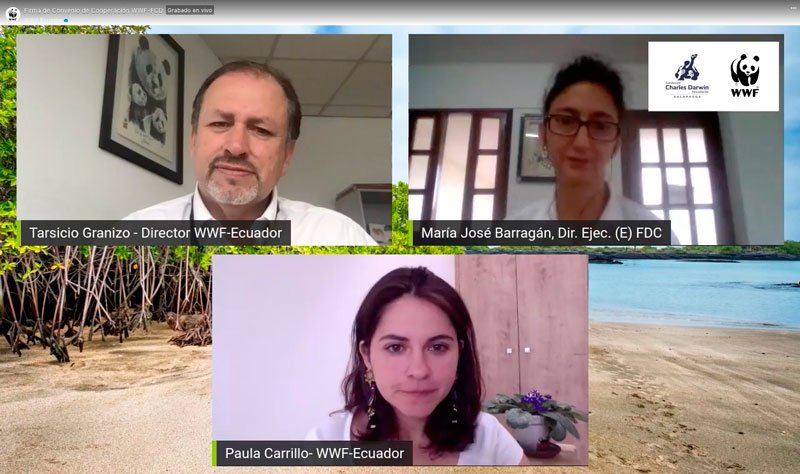Charles Darwin Foundation and WWF-Ecuador Sign Memorandum of Understanding for the Conservation of the Galapagos Islands
In a symbolic and virtual event, complying with the biosecurity measures imposed by the country's health authorities in order to avoid the spread of COVID19, on the morning of the 15th of September 2020, a memorandum of understanding was signed between the Charles Darwin Foundation (CDF) and the World Wildlife Fund (WWF) Ecuador. The signing of this memorandum ratifies the continuity of efforts by both institutions to develop actions in the areas of research, training, information, knowledge and technical assistance to contribute to the conservation and sustainability of Galapagos Province.

María José Barragán P., CDF Interim Executive Director and Director of Science, emphasized the importance of signing this agreement. "Today's signing of the memorandum of understanding ratifies this long-term alliance and projects it into the present and future within the framework of the collaborative work of both institutions for the benefit of the Galapagos archipelago," said María José.
Both the WWF and CDF play a scientific cooperation role, in implementing various lines of research and applied work in conservation and sustainable development projects in Galapagos. Including contributing to the implementation of the Management Plan for Galapagos Protected Areas for Well-Being and generating relevant technical information for decision-making.
"This agreement provides us with new opportunities to continue this historic record of working together, especially now that we have your collaboration in preparing inputs for the Green Climate Fund proposal, in which it is important to have the CDF, recognizing its technical and scientific capacity and its track record. It is satisfying to ratify this commitment because we could not work in Galapagos without the people of Galapagos and an institution as serious as the CDF," said Tarsicio Granizo, WWF Director.
The work carried out between CDF and WWF aims to advance cooperation in addressing threats and challenges to the conservation and sustainability of the Galapagos Archipelago in the present and future.
You can see the event in the following link:
https://web.facebook.com/charlesdarwinfoundation/videos/315654592867235/





